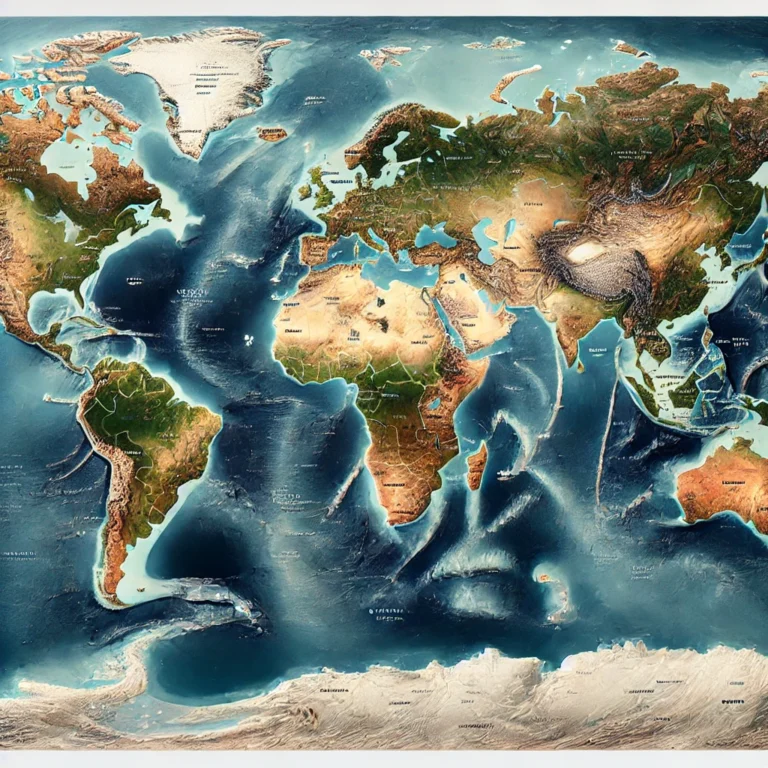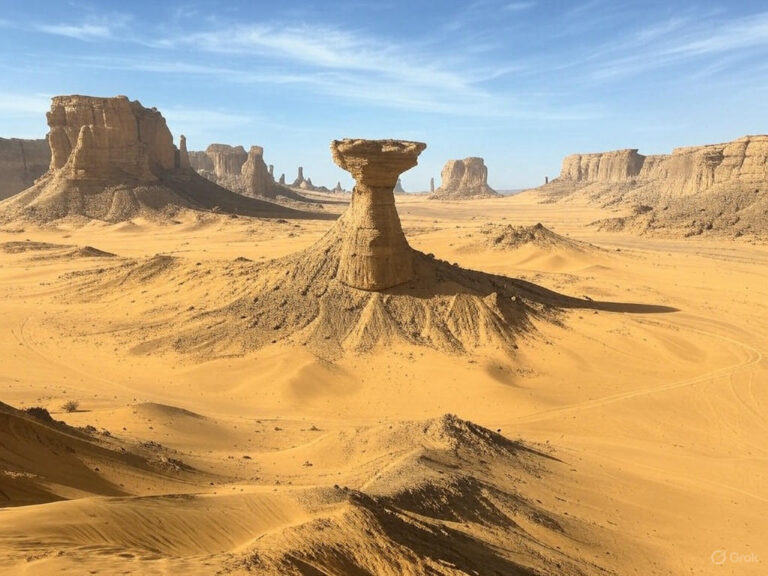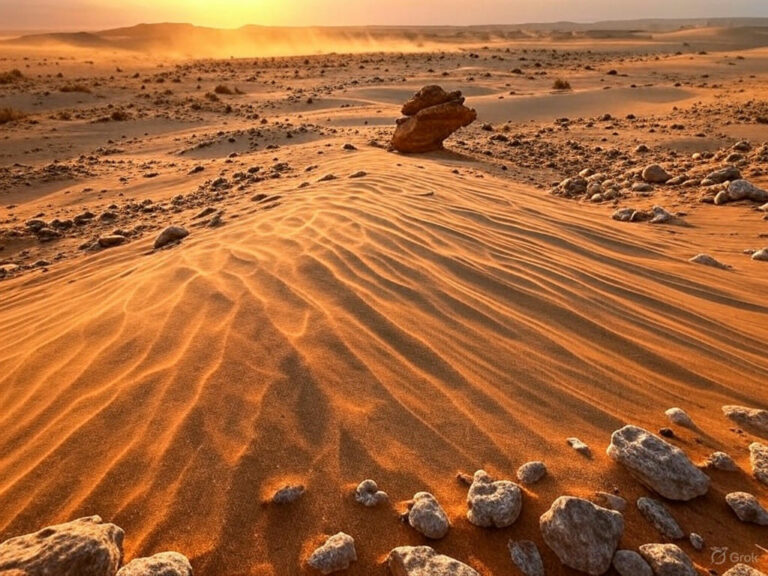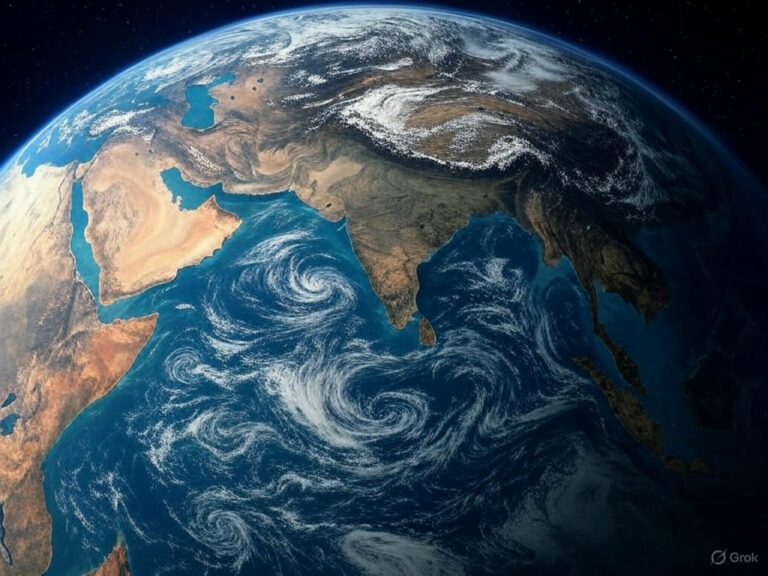Specific Applications of Applied Geomorphology
We consider here some of the applications of geomorphology to the types of problems commonly encountered by geologists, engineers, and planners.
Geomorphology and Hydrology: The Connection Between Landforms and Water Availability
Water is a fundamental resource, shaping civilizations and landscapes alike. But have you ever wondered why some regions have abundant groundwater while others face shortages? The answer lies in geomorphology, the study of landforms, and hydrology, the science of water movement. Together, they explain why different terrains store and supply water differently.
How Does Geomorphology Influence Water Availability?
Water used by humans comes from two main sources:
- Surface Water – Found in rivers, lakes, and streams.
- Groundwater – Stored beneath the Earth’s surface in aquifers.
The availability of groundwater depends on the type of rock and landform in a region. Let’s explore how different landscapes affect water storage and movement.
1. Water in Limestone (Karst) Terrains
Limestone landscapes, also known as karst terrains, behave uniquely when it comes to water storage. This is because limestone can have two types of permeability:
- Primary Permeability – The natural ability of rock to allow water to pass through tiny, interconnected pores formed during its creation.
- Secondary Permeability – Created later by natural forces like faulting, folding, and the dissolving of rock by water (a process called corrosion).
In the early stages of karst evolution, water flows both above and below the surface. However, over time, more water moves underground through widened solution channels, reducing surface water availability. This is why karst regions rely heavily on karst springs for water.
Challenges of Water in Karst Areas:
- Water quality is often poor because pollutants and bacteria can quickly enter underground channels through sinkholes and swallow holes.
- Water sources are unpredictable—one area may have plenty of water while a nearby location may have very little.
- Tracing groundwater flow is difficult but can be done using dye-tracing techniques (like adding fluorescein to see where the water emerges).
Best Water Storage Conditions in Limestone Regions:
- If limestone is highly permeable and covered by a sandstone layer, water is naturally filtered and can be easily extracted.
- If limestone is dense and compact, water movement depends on secondary fractures, leading to low yields or contaminated sources.
2. Groundwater in Glaciated Regions
Regions once covered by glaciers have unique geomorphic features that affect groundwater storage. Some key landforms include:
- Outwash Plains & Valley Trains – These deposits of sand and gravel from melted glaciers can hold large amounts of water.
- Tills – Clay-rich glacial deposits that generally do not store much water, though they may contain local sand and gravel layers that provide usable groundwater.
- Buried Pre-Glacial & Interglacial Valleys – Ancient river valleys, now covered by glacial deposits, can act as hidden reservoirs of groundwater.
To locate groundwater in glaciated areas, scientists create bedrock topography maps to identify buried valleys and determine potential water sources.
Why This Knowledge Matters
Understanding the relationship between geomorphology and hydrology is crucial for:
- Drilling wells in the right locations to ensure a steady water supply.
- Managing water contamination risks in limestone (karst) areas.
- Predicting groundwater availability in glaciated regions for sustainable use.
Final Thought
Whether it’s the underground rivers of a karst landscape or the hidden reservoirs beneath glacial plains, the way water moves and is stored is deeply tied to landforms. By studying geomorphology, we don’t just understand our past—we also secure our future water resources.
Geomorphology and Mineral Exploration: Decoding Earth’s Hidden Treasures
Mineral deposits and oil reserves are not randomly scattered across the planet—they are closely tied to geological structures and landforms. Geomorphology, the study of landforms and their evolution, provides essential clues to where valuable resources might be found. By understanding the relationship between landscapes and mineral deposits, geologists can predict, locate, and extract these resources more efficiently.
1. Surface Clues to Hidden Ore Bodies
Some mineral deposits leave distinct marks on the landscape, which can serve as indicators for exploration. These include:
- Outcrops of Ore & Gossans – Exposed mineral deposits visible on the surface.
- Structural Features (Faults & Fractures) – These often act as conduits for mineral-rich fluids.
- Resistant Ridges – Some minerals, like quartz, resist erosion and stand out in the landscape (e.g., Chihuahua, Mexico).
- Depressions & Sinkholes – Other minerals, such as calcite, dissolve over time, leaving behind distinctive hollows.
A famous example is the Broken Hill lead-zinc deposit in Australia, where the ore body forms a prominent ridge.
2. Weathering and Residual Minerals
Over millions of years, weathering processes break down rocks, sometimes concentrating valuable minerals in the residue. This is how deposits of:
- Iron ore
- Bauxite (aluminum ore)
- Nickel and manganese ores
… are formed. These weathering residues are often found on ancient Tertiary erosional surfaces, which were once near the base level of erosion.
Example:
Bauxite, the primary ore for aluminum, forms from the weathering of aluminous rocks in humid climates. It is often found on limestone or dolomite surfaces.
3. Placer Deposits: The Role of Erosion and Water
Placer deposits are natural accumulations of heavy metals that have been transported by water, wind, or gravity. Their location depends on geomorphic processes such as:
- River transport (Alluvial Placers) – Found in riverbeds, these are major sources of gold, tin, and diamonds (e.g., South Africa, Brazil).
- Slope movement (Colluvial Placers) – Formed when minerals move downhill, such as tin placers in Malaya.
- Wind transport (Aeolian Placers) – Found in deserts, these have yielded gold in Australia and Mexico.
- Wave action (Beach Placers) – Found along shorelines, these contain diamonds (South Africa), zircon (India, Australia), and monazite (Travancore, India).
Geophysical surveys such as magnetic mapping can help locate buried placer deposits by detecting associated minerals like magnetite.
4. Oil Exploration and Geomorphic Clues
Oil is formed from ancient organic matter trapped in porous rock layers. It accumulates in:
- Anticlines (upward folds)
- Synclines (downward folds)
- Fault traps and stratigraphic traps
Geomorphic analysis helps identify these features, particularly in heavily forested regions where rock structures are hidden. Aerial photography, drainage pattern analysis, and tonal variations in vegetation can reveal underlying structures that indicate the presence of oil.
Buried Landscapes and Petroleum Reserves
Oil and gas are often found along unconformities—ancient erosion surfaces where rock layers were cut off and later sealed by new deposits. Understanding these buried landscapes is crucial for locating stratigraphic traps.
Final Thought
Geomorphology plays a critical role in mineral and oil exploration by revealing the hidden structure of the Earth. By studying landforms, weathering patterns, and erosion processes, geologists can pinpoint locations rich in natural resources, reducing exploration costs and improving efficiency. The Earth’s surface holds clues to its underground wealth—geomorphology is the key to deciphering them.
Geomorphology and Engineering Works: The Role of Terrain in Infrastructure Development
Engineering projects—such as roads, dams, airstrips, and material extraction sites—require a deep understanding of geomorphology. Landforms, soil composition, and subsurface geology significantly influence construction feasibility, durability, and safety.
1. Road Construction: Overcoming Terrain Challenges
The best highway routes are determined by topography, geology, and soil conditions. Several terrain types pose challenges:
- Karst Plains: Roads must be designed to prevent flooding from sinkholes. Bridges should be reinforced to withstand solution cavities.
- Glacial Landscapes: Features like eskers, drumlins, and moraines require cut and fill adjustments. Roads over former lakebeds (muck areas) risk sinking due to soft, plastic sediments.
- Hilly and Mountainous Areas: Construction requires numerous bridges, cuts, and fills, increasing the risk of landslides and slumping.
- Soil and Drainage Considerations:
- Silty-clay subgrades with high water tables cause poor road performance.
- Granular subgrades with good drainage ensure longevity.
A geomorphologist’s expertise in soil profiles and landscape history is crucial in planning stable and cost-effective highways.
2. Dam Site Selection: Ensuring Stability and Water Retention
A good dam site must meet five key geological conditions, as outlined by Kirk Bryan:
- A watertight basin of sufficient size.
- A narrow valley outlet with a strong foundation for economical dam construction.
- A stable spillway for excess water discharge.
- Availability of local construction materials (especially for earthen dams).
- A long reservoir lifespan without excessive silt deposition.
Geomorphological Challenges in Dam Construction:
- Limestone Terrains: Prone to underground cavities that could lead to leakage or structural instability.
- Glaciated Regions: Buried valleys with sand and gravel might cause unexpected seepage.
Dams must be strategically positioned after thorough geomorphological mapping to avoid costly structural failures.
3. Airstrip Construction: Finding the Ideal Flat Terrain
The best locations for airstrips have:
✅ Extensive flat surfaces with resistant geo-materials.
✅ Minimal slope to ensure smooth takeoff and landing.
✅ Good drainage to prevent waterlogging.
✅ Fog-free, clear visibility for safe navigation.
A morphological map helps engineers identify suitable sites that meet these criteria.
4. Locating Sand and Gravel Pits: Evaluating Deposits for Construction
Sand and gravel are essential for construction. The best sources include:
- Floodplains & River Terraces (but may have excess silt).
- Alluvial Fans & Cones (angular gravels with variable sizes).
- Glacial Outwash Plains & Valley Trains (ideal, with minimal overburden).
- Wind-blown Sands (usable for sand but lack gravel).
🔍 Geomorphologists analyze deposit quality based on grain size, weathering, and overburden thickness.
Conclusion
Geomorphology plays a critical role in engineering projects, ensuring:
✔ Efficient road alignment and durability.
✔ Stable, leak-proof dam sites.
✔ Safe, level airstrips.
✔ Optimal sand and gravel resource extraction.
By integrating landform analysis with engineering, projects become more sustainable, cost-effective, and resilient against natural forces.
Geomorphology and Military Geology: Terrain as a Strategic Asset
Geomorphology plays a crucial role in military operations, influencing battlefield strategy, mobility, defense positioning, and resource availability. As Thornbury highlights, military campaigns have evolved to increasingly rely on terrain analysis, making geomorphology an essential tool in modern warfare.
1. World War I: Static Trench Warfare and Geology
- WWI was characterized by trench warfare, where geological knowledge was more critical than topography.
- Key considerations included:
✅ Soil and rock type for trench excavation.
✅ Water supply availability for sustaining troops.
✅ Mining and countermining potential for underground warfare.
Although topography influenced troop movement, its role in battle planning was secondary compared to geological factors.
2. World War II: Mobility, Blitzkrieg, and Terrain Intelligence
- With fast-moving warfare (Blitzkrieg tactics), terrain analysis became vital.
- The success of military campaigns depended on trafficability—the ability of vehicles and troops to navigate landscapes efficiently.
- Geomorphologists provided crucial insights, including:
✅ Landform origins and their impact on movement.
✅ Bedrock structure, soil conditions, and vegetation cover.
✅ Identification of defensible positions and weak points.
3. Terrain Analysis: The Intersection of Geology and Warfare
According to Erdmann (1943), a geomorphologist possesses an instinct for terrain, predicting:
✔ How distant land will appear when reached.
✔ How different surfaces affect troop mobility.
✔ How landforms relate to underlying geology and resources.
This understanding is essential for strategic planning, influencing both offensive and defensive military operations.
4. Aerial Photography in Military Geology
- Hunt (1950) emphasized the role of aerial photographs in terrain intelligence.
- Even without detailed geologic maps, military analysts could:
✅ Identify hills, plains, rivers, forests, and swamps.
✅ Assess water supply potential and soil stability.
✅ Determine trafficability and construction feasibility.
✅ Predict natural cover and defensive advantages.
Rather than simply identifying landforms, geomorphologists interpret their significance, predicting how they influence movement, supply chains, and fortifications.
5. The Modern Military Geologist: Integrating Geomorphology into Strategy
Today, military operations still rely heavily on terrain intelligence, especially in:
- Tank and troop movements in deserts, mountains, and jungles.
- Engineering fortifications and underground shelters.
- Predicting flood risks and seasonal terrain changes.
- Selecting locations for airbases and logistics hubs.
Conclusion
Geomorphology is fundamental to military success, offering strategic advantages by:
✅ Enhancing mobility through terrain selection.
✅ Identifying natural defense points.
✅ Assessing construction feasibility for roads, bridges, and fortifications.
✅ Predicting the impact of natural landscapes on warfare.
As warfare continues to evolve, terrain intelligence remains a decisive factor, making geomorphologists indispensable to modern military planning.
Geomorphology and Urbanization: The Role of Urban Geomorphology
Urban geomorphology has emerged as a crucial field in city planning, ensuring sustainable and disaster-resilient urban development. As R.U. Cooke defines, this branch of geomorphology focuses on understanding landforms, processes, materials, and hazards to support urban planning, development, and management.
1. Geomorphology as a Foundation for Urban Growth
A city’s stability and sustainability depend on several geomorphological factors, including:
✅ Topography – Determines drainage, flood risks, and construction feasibility.
✅ Lithology (Rock & Soil Composition) – Affects building foundations and land stability.
✅ Hydrology – Impacts water supply, drainage, and flood risks.
✅ Geomorphic Processes – Influences long-term urban sustainability (e.g., erosion, subsidence).
An urban geomorphologist’s role spans three phases:
1️⃣ Pre-Development – Conducting field surveys, classifying terrain, and selecting suitable settlement sites.
2️⃣ During Development – Monitoring construction impact on landforms and addressing potential hazards.
3️⃣ Post-Development – Assessing the effects of urbanization on natural processes and vice versa.
2. Common Geomorphological Challenges in Urban Areas
According to Cooke, poor understanding of geomorphic conditions often leads to urban hazards, including:
🔴 Foundation Instability
- In drylands and periglacial regions, unstable sediments can lead to settling of foundations, causing structural failures.
- Weathering processes weaken building materials, leading to long-term damage to infrastructure.
🔴 Flooding and Drainage Issues
- In subtropical humid regions, heavy rainfall combined with poor urban drainage planning causes flood damage to roads, buildings, and utilities.
- In low-lying areas, inundation risks increase due to poor geomorphological assessments.
🔴 Landslides and Erosion
- Urban expansion into hilly or mountainous terrains can trigger landslides and slope failures, threatening lives and property.
- Poor land-use planning accelerates soil erosion, leading to loss of fertile land and increased sedimentation in rivers.
🔴 Uncontrolled Urban Growth
- In many developing countries, lack of geomorphic planning results in squatter settlements and shantytowns, which are prone to environmental hazards.
- These settlements often lack proper drainage and infrastructure, leading to serious social and environmental problems.
3. The Need for Geomorphological Planning in Cities
🔹 Land Use Optimization – Identifying stable ground for high-rise buildings and infrastructure projects.
🔹 Disaster Risk Reduction – Mapping flood-prone, landslide-prone, and erosion-prone areas for safer urban development.
🔹 Water Management – Ensuring proper drainage, water supply sustainability, and groundwater conservation.
🔹 Sustainable Expansion – Guiding urban growth while minimizing environmental degradation.
Conclusion
Urban geomorphology is essential for sustainable city development. Ignoring geomorphic conditions leads to costly infrastructure failures, environmental degradation, and increased disaster risks. Integrating geomorphology into urban planning ensures cities are not only structurally sound but also resilient to natural hazards, promoting sustainable and livable environments for future generations.
Geomorphology and Hazard Management
Geomorphic hazards, as defined by Chorley, refer to natural or man-made changes that affect the stability of landforms, posing risks to living things. These hazards can arise from long-term geological processes (faulting, folding, subsidence, climatic change) or sudden catastrophic events (earthquakes, volcanic eruptions, landslides, floods, avalanches).
Understanding geomorphological processes is essential for predicting, assessing, and managing such hazards effectively.
1. Monitoring & Prediction of Geomorphic Hazards
🌋 Volcanic Eruptions
Geomorphic knowledge helps in predicting volcanic activity through:
✅ Seismic Monitoring – Detecting underground magma movement via earth tremors and seismic events.
✅ Surface Tilt Measurements – Using tilt meters to track changes in land elevation due to magma pressure.
✅ Thermal and Gas Monitoring – Observing temperature changes in crater lakes, hot springs, and fumaroles.
✅ Satellite & Laser Scanning – Measuring topographic changes in dormant volcanoes.
✅ Gravity & Magnetic Field Analysis – Tracking underground magma shifts.
These techniques help forecast eruptions and predict lava flow paths, minimizing potential devastation.
🌊 Flood Hazard Management
Understanding river morphology and hydrodynamics helps design effective flood control measures:
✅ Delaying Runoff – Controlling rainfall infiltration using afforestation and check dams.
✅ Accelerating Discharge – Straightening meandering channels to speed up water flow.
✅ Flow Diversion – Using artificial channels to redirect excess floodwaters.
✅ Flood Protection – Constructing embankments and levees to confine river overflow.
✅ Early Warning Systems – Hydrological monitoring to forecast floods in advance.
⚠️ However, if sediment erosion from the upper catchment area is high, levees may lead to disastrous flash floods by causing excessive sedimentation and riverbed rise.
🌍 Earthquake Hazard Management
Earthquakes, both natural and man-induced (e.g., from dam construction), require careful geomorphic assessments:
✅ Terrain Stability Analysis – Identifying weak fault zones prone to seismic activity.
✅ Impact of Infrastructure – Evaluating how dams, reservoirs, and large buildings affect crustal stability.
✅ Hill Slope Stability Studies – Mapping unstable slopes to prevent landslides and unsafe settlements.
Understanding seismic risks helps in urban planning, engineering design, and disaster preparedness.
2. Applications of Geomorphic Knowledge in Hazard Management
✔ Mapping Hazard-Prone Zones – Identifying areas at risk of landslides, floods, and earthquakes.
✔ Developing Early Warning Systems – Using real-time data from geomorphic monitoring.
✔ Disaster-Resilient Infrastructure Planning – Constructing earthquake-resistant buildings and flood-proof settlements.
✔ Sustainable Land Use Planning – Avoiding human encroachment on unstable terrains.
✔ Erosion & Sediment Control – Preventing excessive siltation in flood-prone river valleys.
Conclusion
Geomorphology plays a critical role in disaster preparedness and risk reduction. By integrating geomorphic knowledge into hazard prediction, mitigation, and urban planning, societies can reduce vulnerability, save lives, and prevent economic losses caused by natural disasters.
Geomorphology and Regional Planning
Applied geomorphology plays a crucial role in regional planning, ensuring sustainable and balanced economic growth. A region’s topography, soils, hydrology, lithology, and terrain characteristics significantly influence its development potential and resource utilization.
1. Importance of Geomorphology in Regional Planning
📍 Identifying Suitable Land Uses
✅ Agriculture – Soil characteristics, drainage, and slope stability determine farmland suitability.
✅ Urban Expansion – Cities must expand in areas with stable landforms, avoiding floodplains or landslide-prone slopes.
✅ Industrial Development – Site selection depends on ground stability, water availability, and transportation access.
🌊 Water Resource Management
✅ Watershed Planning – Ensuring efficient water use and flood control.
✅ Groundwater Assessment – Understanding aquifers and recharge zones to prevent over-extraction.
✅ Drought Management – Planning irrigation systems based on geomorphic and hydrological data.
🏗️ Infrastructure Development
✅ Road & Rail Network Planning – Constructing highways avoiding unstable slopes or karst terrain.
✅ Dam & Reservoir Construction – Selecting sites with stable geology and minimal seepage risks.
✅ Disaster-Resilient Settlements – Avoiding high-risk areas prone to landslides, earthquakes, or floods.
🌱 Environmental Conservation
✅ Erosion Control – Implementing reforestation and terracing in degraded landscapes.
✅ Sustainable Mining & Quarrying – Preventing excessive land degradation and soil loss.
✅ Protecting Ecologically Sensitive Zones – Avoiding urbanization in fragile ecosystems.
2. Role of Geomorphologists in Regional Planning
🔹 Conduct terrain classification and landform analysis.
🔹 Identify hazard-prone areas for disaster risk reduction.
🔹 Provide scientific data for informed decision-making.
🔹 Assist in long-term land-use planning and policy formulation.
Conclusion
Regional planning without considering geomorphology can lead to environmental degradation, economic losses, and increased disaster vulnerability. Integrating geomorphic principles ensures sustainable growth, efficient resource use, and disaster resilience, leading to a well-planned and prosperous future.
Other Applications of Geomorphology
Beyond its primary applications, geomorphic principles contribute to various fields, enhancing environmental management, engineering, and human activities
1. Soil Mapping & Land Classification
✅ Soil Development & Distribution – Soil types are directly influenced by topography and geomorphic processes.
✅ Land Use Planning – Identifying fertile lands for agriculture and unsuitable terrains for construction.
✅ Erosion Control – Recognizing high-risk areas prone to soil degradation and implementing conservation measures.
2. Coastal & Beach Engineering 🌊
✅ Shoreline Protection – Understanding wave dynamics, coastal erosion, and sediment transport for effective beach management.
✅ Harbor & Port Construction – Ensuring stable shorelines and minimizing erosion impacts.
✅ Coastal Hazard Mitigation – Predicting and managing tsunami risks, sea-level rise, and storm surges.
3. Soil Erosion & Conservation 🌱
✅ Erosion Prediction – Identifying areas susceptible to sheet-wash erosion, gullying, and mass wasting.
✅ Sustainable Farming Practices – Implementing contour farming, terracing, and afforestation to reduce land degradation.
✅ Watershed Management – Preventing sedimentation in rivers and reservoirs through proper land-use strategies.
4. Human Impact & Anthropogeomorphology 🏗️
✅ Urban Expansion & Environmental Impact – Assessing how cities alter landforms and disrupt natural processes.
✅ Mining & Quarrying – Mitigating the geomorphic consequences of resource extraction.
✅ Deforestation & Land Degradation – Studying the long-term effects of human activities on landscape evolution.
5. Hazard Management & Disaster Mitigation 🌍
✅ Landslide Risk Assessment – Mapping unstable slopes for infrastructure safety.
✅ Flood Control Planning – Analyzing river dynamics to reduce flood risks.
✅ Seismic & Volcanic Hazard Monitoring – Using geomorphic indicators to predict earthquakes and volcanic eruptions.
Conclusion
Geomorphology is an interdisciplinary science with applications in engineering, environmental management, urban planning, and disaster mitigation. A deep understanding of landforms and processes allows for sustainable development, reduced natural hazards, and efficient resource management, making geomorphology an essential tool for modern society.






